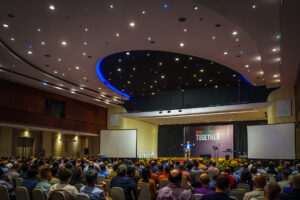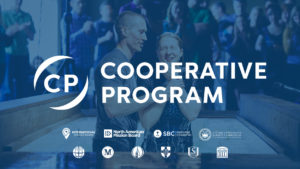
NASHVILLE, Tenn. (BP)–Directing a Bible translation project is more a privilege than a job for Ed Blum.
It’s a perfect way to study the Bible “in very great detail,” said Blum, general editor of the Holman Christian Standard Bible being developed by Broadman & Holman Publishers of LifeWay Christian Resources of the Southern Baptist Convention.
Blum is at home with Scripture and with the languages of the Bible, having taught 17 years at Dallas Theological Seminary where he earned master’s and doctoral degrees in theology. He also holds a doctorate from the University of Basil in Switzerland and has done post-doctoral studies at Rice University in Houston.
But Blum is also experienced in management and technology. He was vice president, management services, for Fletcher Pacific Construction Co., based in Honolulu, from 1990-96.
His perpetual tan and his background in technology belie the stereotype of a Bible translator.
“I think God uses all of our training and experience,” said Blum, who directs the translation process using computer software that makes formerly lengthy research processes almost instantaneous.
A computer program, Accordance, developed by Roy Brown, a physicist from Orlando, Fla., enables a translator to view a verse of Scripture in 50 different versions or to find out within seconds how many times a comma is used after the word “therefore” in different translations. Grammatical searches, a harmony of the gospels or a concordance can be developed very quickly with the software.
A team of 78 scholars from around the world is involved in the project with a six-person editorial team based in Dallas and in constant communication with B&H editors in Nashville, Tenn. Translations in various stages are sent by e-mail from writers to editors, English stylists and reviewers.
“This is the first translation I’m aware of that’s had this level of technological sophistication,” Blum said. “With earlier translations, lots of money was spent getting scholars together. Our team members can do most of their work at their locations.”
Blum envisions the Holman Christian Standard Bible as a blend of the accuracy of the New American Standard Bible with the readability of the New International Version.
It’s a word-for-word translation from the original Hebrew, Greek and Aramaic languages, Blum said. The Gospel of John has been completed, with all four gospels and the Book of Revelation slated to be finished by the end of the year. The New Testament is targeted for completion by the end of 2000, with the entire Bible to be released by 2004.
Footnotes and word studies will be unique features of the Holman Christian Standard Bible, Blum said.
“We’re using footnotes to show alternate translations, alternate textual readings, cross references and explanatory material. To some extent, this will have some features of a study Bible before it becomes a full-fledged study Bible.”
The word studies will help readers understand terms common in the Scriptures that “are not easily grasped today,” Blum said. Examples include glory, propitiation, justification and redemption.
“In the ancient world, everyone knew what it was to be a slave. People were constantly buying and redeeming slaves. Redemption was happening every day,” he said. “But today the word redemption doesn’t ring any bells.”
A complex, multi-step editorial process involves writing, editing, reviewing and more editing. Various team members went word for word through the Greek text of the Gospel of John a total of 21 times in preparing their translation.
While Blum sets deadlines for translations to be finished, he quipped, “Finished is an interesting word.” He noted reviews would be ongoing with improvements and corrections made from one printing to the next, a common practice in translations.
“With LifeWay owning the copyright and the database, there can be continuing improvements,” Blum said.
While the Holman Christian Standard Bible translation is still in the early stages, Blum is the second general editor. The first was Art Farstad, who also served as executive editor for the New King James Version.
Work on the new translation began as an independent project of Farstad. Broadman & Holman then purchased the project that continued to be directed by Farstad until his sudden death in August 1998. Blum had worked with Farstad and was named to succeed him.
Blum and the Dallas team begin each session with prayer. “We’re always thankful we’re being paid to do what we love to do, study the Bible,” he said.
“We want this Bible to be a spiritual success. We want it to be a gift to the church and a legacy for our children and grandchildren.”















